Global economic / monetary trends at end-2015
Annual GDP growth in the G7 economies and seven large emerging economies (the "E7") fell to 2.4% in the third quarter of 2015, the lowest since the second quarter of 2013*. GDP and industrial output fluctuations are closely correlated. Annual industrial output growth continued to weaken through November, suggesting a further decline in GDP expansion in the fourth quarter – see first chart.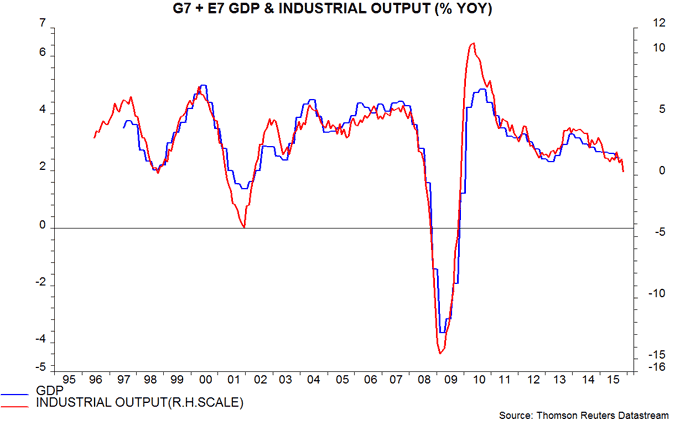
Still-softening annual growth, however, conceals a recovery in shorter-term momentum. The six-month change in industrial output has moved up significantly from a low reached in June, though remains weak. Six-month (or two-quarter) GDP growth may also have bottomed in the second quarter – second chart.
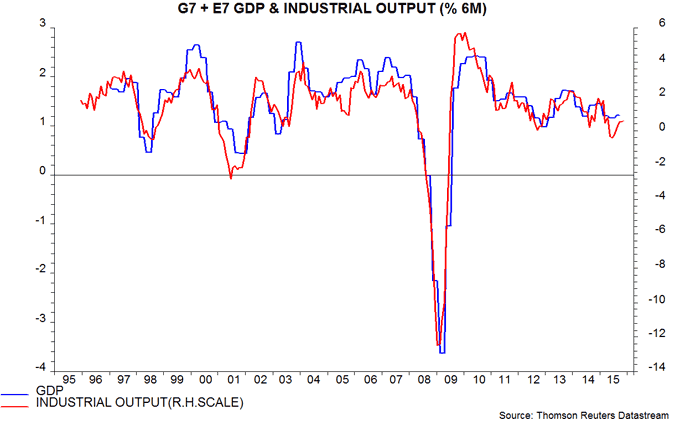
This revival has been driven by stronger consumer demand as households have become more convinced that lower energy bills are permanent, implying that the saving can be spent on other items. Six-month retail sales growth has rebounded since the spring while auto sales have surged, with strength magnified by a recent sales tax cut in China – third chart.
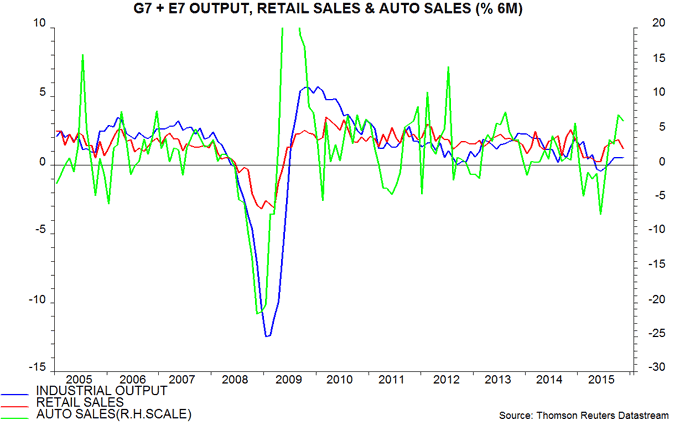
Real money trends, meanwhile, were respectable during 2015 and firmed towards year-end. Six-month growth of G7 plus E7 real narrow money bottomed in July, returning to the top of its range in recent years by November. Allowing for a typical nine-month lead, this suggests that global economic momentum will remain soft in early 2016 but rise in the spring / summer – fourth chart.
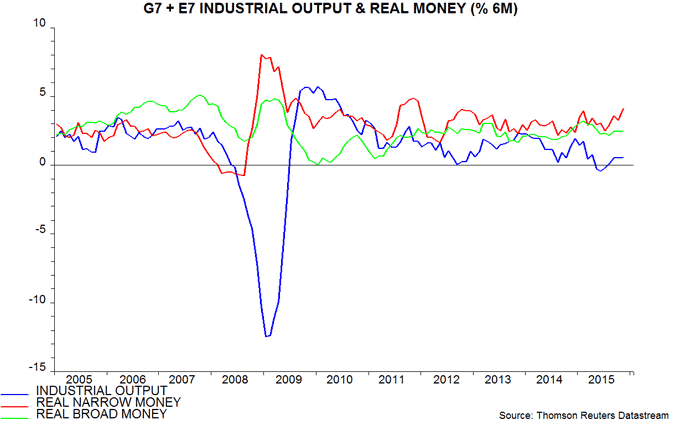
The rise in aggregate real money expansion, however, conceals a significant divergence between the G7 and E7. Six-month G7 real narrow money growth fell sharply between February and October, reflecting weakness in the US and, to a lesser extent, Japan. A surge in Chinese M1, by contrast, has pushed E7 growth to its highest level since September 2010 – fifth chart.
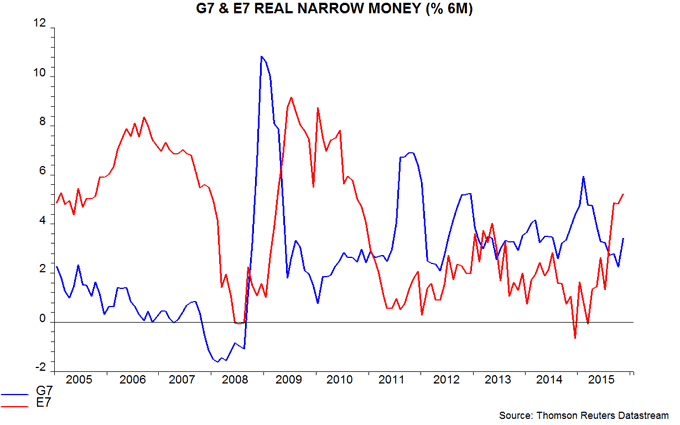
This divergence is somewhat at odds with the consensus view that the US / G7 economies will expand solidly in 2016 while emerging markets will remain a drag on global growth. The suggestion is that Chinese / E7 economic news will surprise positively by mid-2016, while US growth may disappoint (again), reducing pressure for Fed tightening. There are tentative hints of this theme in recent data: six-month industrial output momentum has recovered by more in the E7 than the G7, while economic data surprises have, on average, been positive in emerging markets and negative in the G10 developed economies, according to Citigroup – sixth and seventh charts.
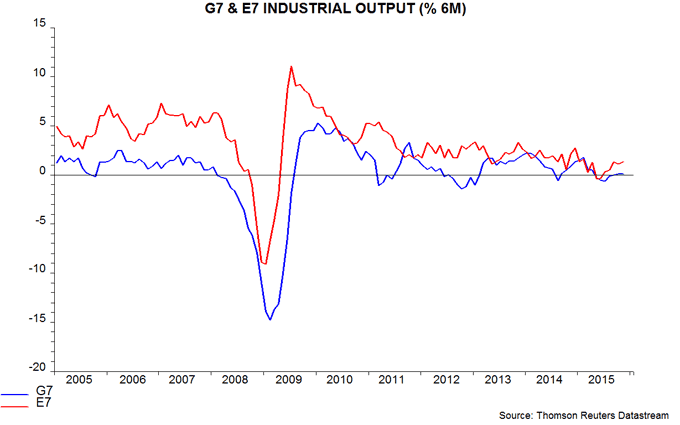

A further revival in E7 output growth, as suggested by monetary trends, would offer relief to commodity markets. Industrial commodity prices are reasonably well correlated with E7 industrial activity, although supply shocks periodically distort the relationship (and did so in 2014-15). Based on history, six-month E7 industrial output growth may need to rise above 2.5%, or 5% annualised, for commodity prices to recover sustainably – eighth chart.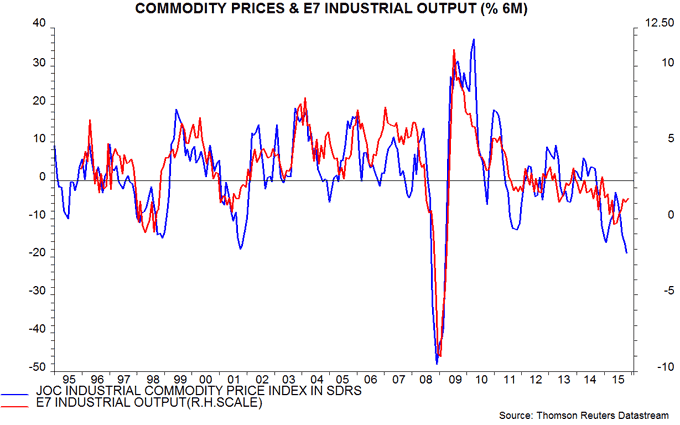
From the perspective here, the key uncertainty as 2016 begins is whether the recent Chinese narrow money surge carries the usual implication of improving economic prospects. Similar policy-driven pick-ups in 2008 and 2012 were followed by significant economic accelerations and analysis of the monetary data does not suggest any distorting factors.
*Weighted average of national data. Weights are averages of GDP shares at current market and purchasing power parity exchange rates.

Reader Comments